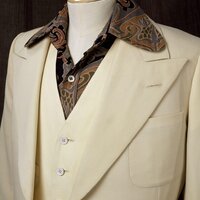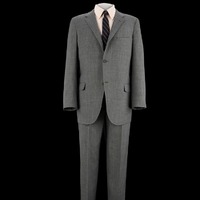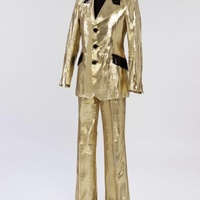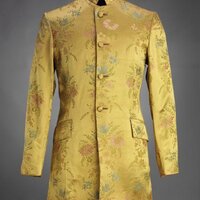Introduction
Redefining Menswear and Masculinity
Now more than ever in societies across the globe, there is a growing divide between masculinity and femininity and what defines each of those qualities. Most people typically believe society to be fairly open and diverse with what it considers to be the norm, but there are certain demographics that protest this, feeling that the definition of masculinity is being threatened. There is less of a focus on femininity because it is not being held to a higher standard in the patriarchy.
With the growing globalization of technology, men online have been setting a ridiculous standard of what it means to be the “ultimate man” or an “alpha male”. In both the United States and the United Kingdom, both patriarchal based societies, masculine traits and features have always been held to the ideal standard, yet also to an impossible standard. What it means to be the perfect man is always evolving, and, depending on who you ask, answers may vary. However, the foundational values of what it means to be masculine, or a man, have remained fairly similar through time.
There was a time a few decades ago when there was a big challenge to these standards, and that led to a revolution in men’s fashion through the use of traditional feminine fabrics and shapes. This change was deemed the ‘Peacock Revolution’ of the late 1960s to the late 1970’s (U.K. & U.S.). This would be the precursor to what is more popularly known of the 1980’s androgynous and eclectic clothing style. Clothing has been used through time and media as a way of expression and to voice opinions with little to no words. Prior to these movements, fashion was very straightforward. Men would wear plain 2 piece black or gray suits, and women, while having more options available, were still expected to dress femininely.
This movement in men’s fashion changed the way men and masculine-presenting people were able to express themselves without the worry of labels being put on them and challenged the definition of what it means to be a man.
Pictured on the left: A Nehru jacket made from a yellow synthetic woven brocade fabric; includes pale blue, pink, and green floral motifs across the jacket. For closers, 4 matching covered fabric buttons starting from the base of the neck to the waistline. Created by retailer Lord John.
Pictured on the right: A metallic gold lamé jacket and pant set with black lamé collar, pocket flaps details, and three large buttons on the center of the jacket. The suit was worn by Marc Bolan. Created by Granny Takes a Trip boutique.
Curatorial Statement
This exhibit is focused on showing the men's fashion trends of the 1960s and 1970s through clothing and photographs. When curating items, I pictured a timeline from the beginning to the fade off of the peacock revolution.
I wanted to start with an introduction to the problems in todays society that guides the converstaion to the same situation that started in the 1960s. From there we flow into Carnaby street London where the peacock revolution began. Carnaby street was home to many boutiques that had new styles inspired from many cultures and subgroups of people. There, I wanted to focus into one of the most important designers on the street that dressed so many celebrities, Mr. Fish. He and many others designers on the street had the support from famous musicians they dressed like the Beatles, Elton John, Jimi Hendrix, etc. Because of the boom in famous musicians wearing these new fashions, the U.S. soon followed and worked along the youthquake movement.
This narrative felt the best to display the objects as they built off eachother in a timeline, like a domino effect.



